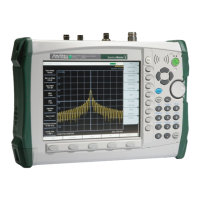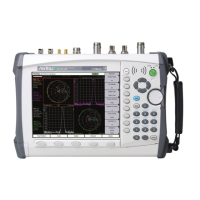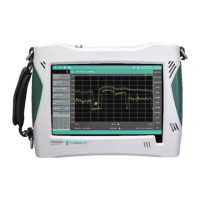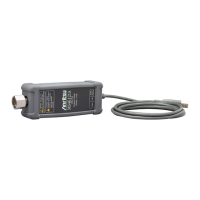S331L UG PN: 10580-00321 Rev. M 3-13
Cable and Antenna Measurements 3-4 Line Sweep Measurements
DTF Measurement
Distance-To-Fault (DTF) measurements are made with the antenna
disconnected and replaced with a 50 Ω precision load at the end of the
transmission line. This measurement allows analysis of the various
components of the transmission feed line system in the DTF mode.
This measurement reveals the precise fault location of components in
the transmission line system. This test helps to identify specific
problems in the system, such as connector transitions, jumpers, kinks in
the cable or moisture intrusion.
The first step is to measure the distance of a cable. This measurement
can be made with an open or a short connected at the end of the cable.
The peak indicating the end of the cable should be between 0 dB and
5 dB. An open or short should not be used when DTF is used for
troubleshooting the system because the open/short will reflect most of
the RF energy from the Site Master and the true value of a connector
might be misinterpreted or a good connector may look like a failing
connector.
A 50 Ω load is the best termination for troubleshooting DTF problems
because it will be 50 Ω over the entire frequency range. The antenna
can also be used as a terminating device but the impedance of the
antenna will change over different frequencies since the antenna is
typically only designed to have 15 dB or better return loss in the
passband of the antenna.
DTF measurement is a frequency domain measurement and the data is
transformed to the time domain. The distance information is obtained
by analyzing how much the phase is changing when the system is swept
in the frequency domain. Frequency selective devices such as TMAs
(Tower Mounted Amplifiers), duplexers, filters, and quarter wave
lightning arrestors change the phase information (distance information)
if they are not swept over the correct frequencies. Care needs to be
taken when setting up the frequency range whenever a TMA is present
in the path.
Using DTF Aid
Because of the nature of the measurement, maximum distance range
and distance resolution are dependent upon the frequency range and
number of data points. DTF Aid (Freq/Distance > Distance > DTF Aid)
shown in Figure 3-10 explains how the parameters are related.
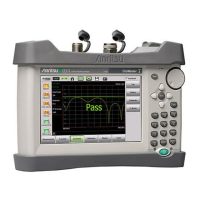
